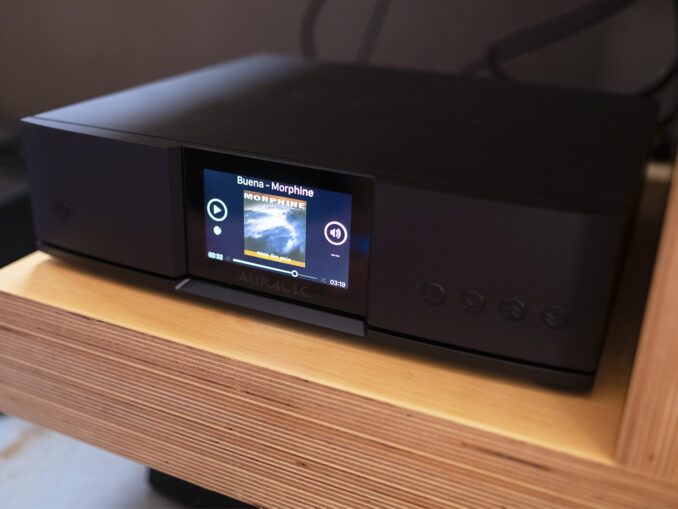
The big question for me regarding the Auralic ARIES G2.2 was a simple one—is it better than the Auralic ARIES G1.1 and if so, how.
Spoiler Alert: It is. Better.
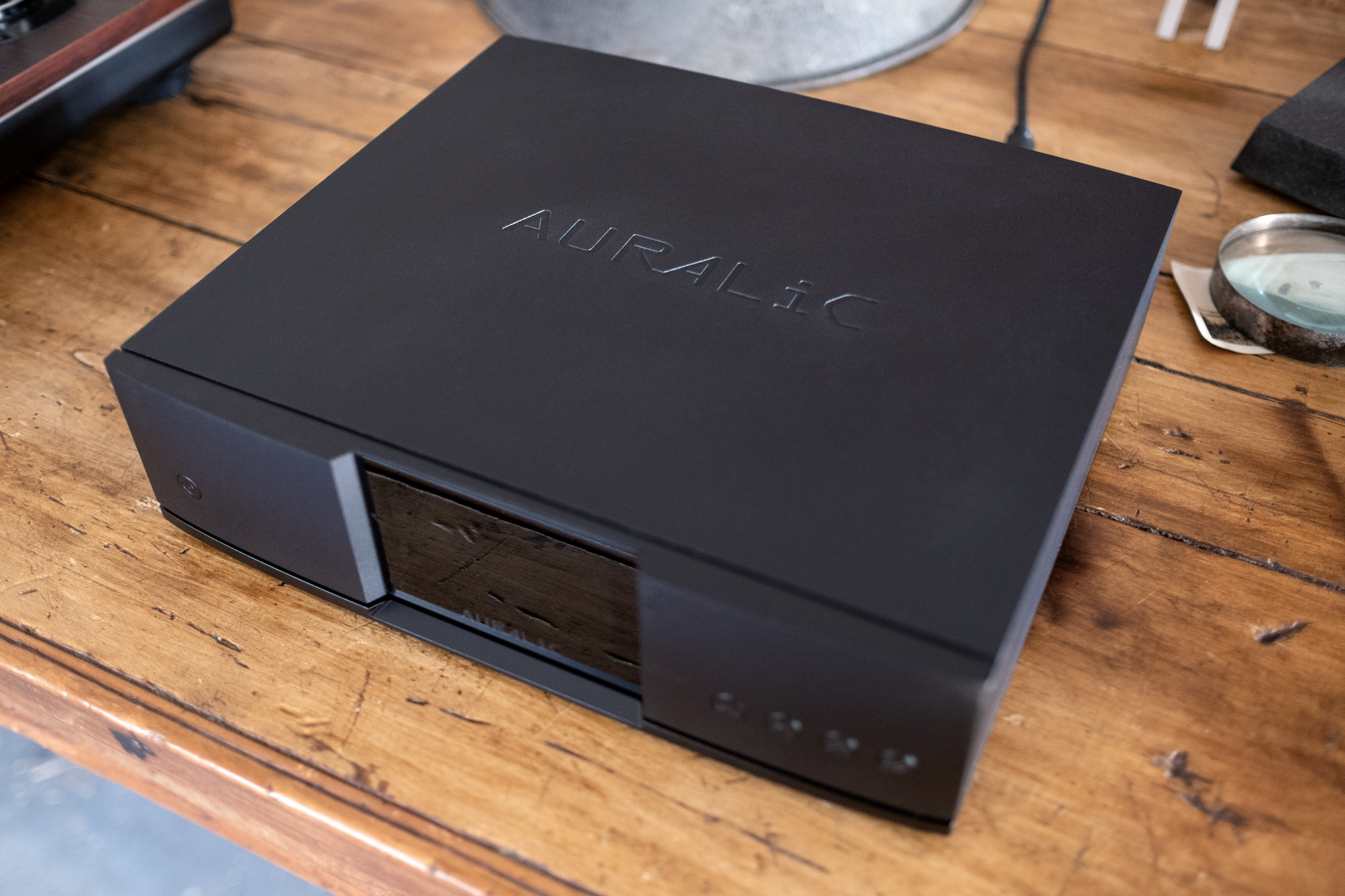
The ARIES G2.2 differs from the ARIES G1.1 (review) in a number of ways. From the original press release:
AURALiC has completely redesigned the ARIES G2.2 and G3 products, incorporating over 90% new components to deliver unparalleled performance. The USB DAC output now boasts second-generation galvanic isolation technology, enhancing compatibility with a wide range of DACs and ensuring a more refined audio experience.
The new Purer-Power low noise power supply design features double the capacity of preceding G2.1 models and even lower noise levels, providing extremely stable and reliable power to the device. Moreover, the optional internal music storage is now based on NVMe SSD technology, delivering read and write speeds up to ten times faster than its predecessor.
The ARIES G2.2 and G3 also now support USB 3.0 for external music storage, further expanding its capabilities and making it easier than ever to access and stream high-quality audio files.
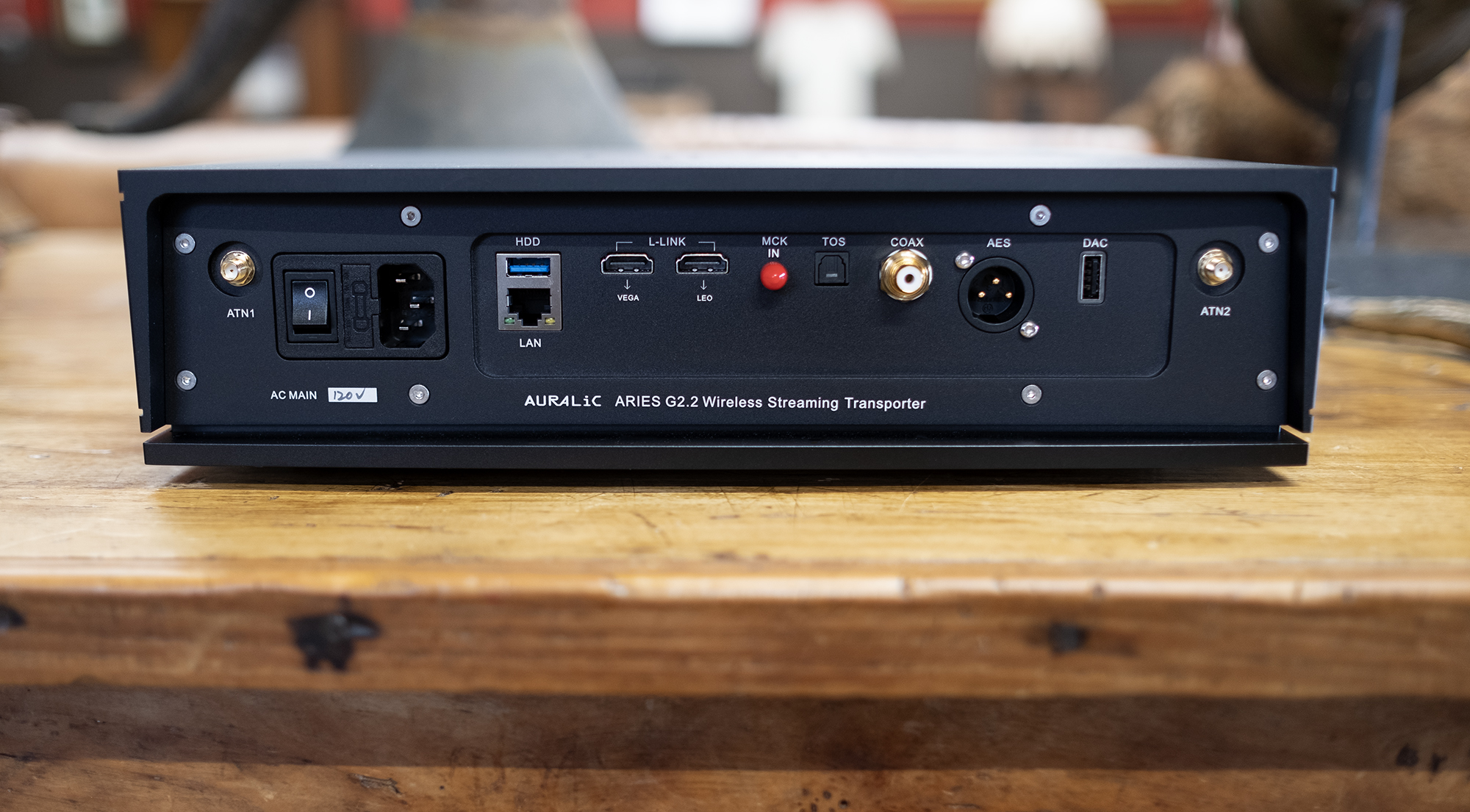
The ARIES G2.2. also adds Auralic’s proprietary HDMI-type, 18Gbps high-speed Lightning Link to connect to the company’s Vega DACs and Leo Reference Master Clock. Inside, Auralic’s Tesla G3 architecture is at work.
From Auralic:
Built on a quad-core 64-bit architecture, our Tesla G3 streaming platform delivers eight times the processing capability of its predecessor. Equipped with 4GB of DDR4 system memory, the Tesla G3 can easily handle even the most demanding processing tasks, making it a future-proof solution which will accommodate the rapidly evolving digital audio landscape. The Tesla G3 platform also employs Direct Memory Access (DMA) technology for its audio input and output channels, enabling all audio-related hardware and software to access the system memory directly. This significantly reduces latency and jitter by 90% compared to Tesla G2, giving us more flexibility to fine-tune the performance and sound quality of our products.
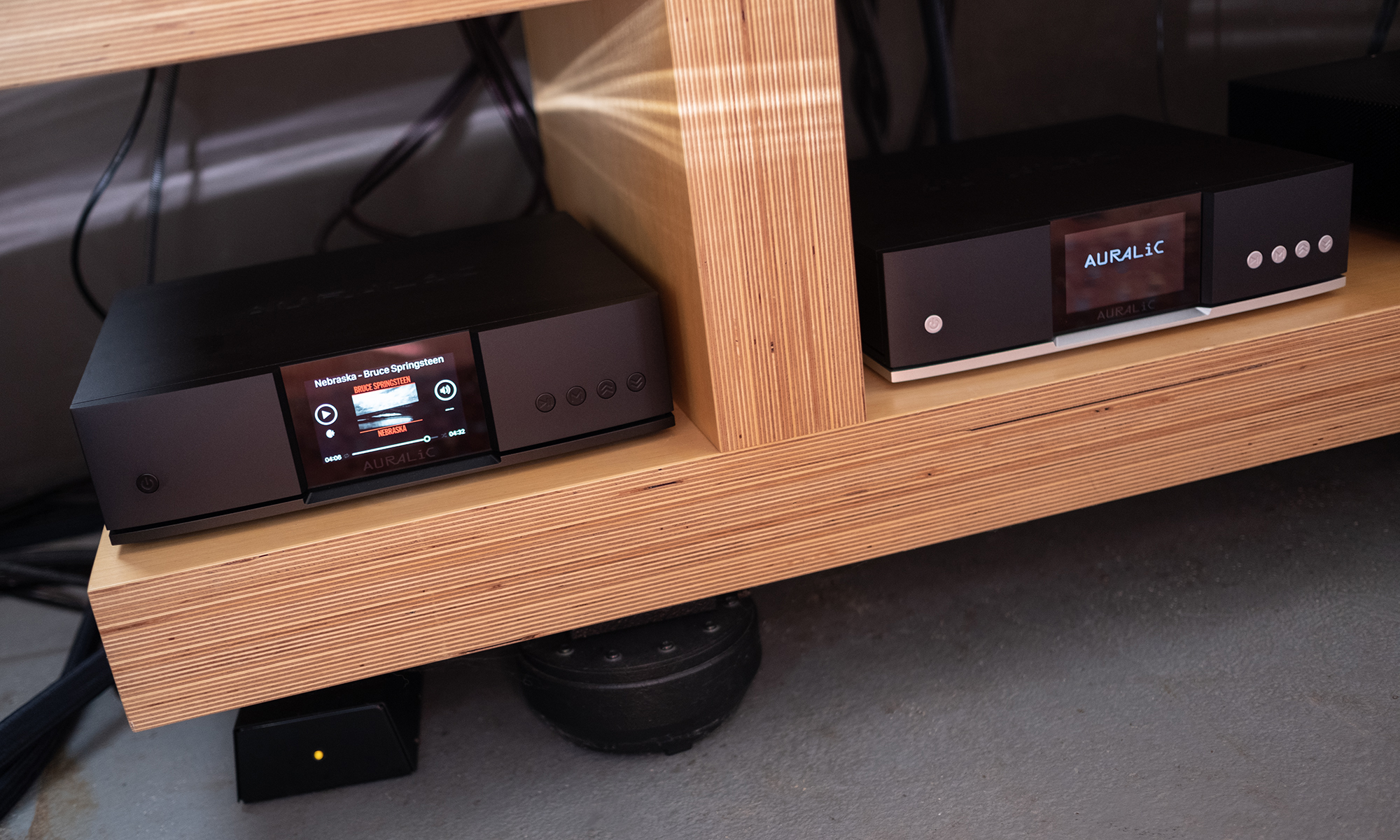
On the face of it, you’d be hard pressed to suss out any visual difference when looking at both units dead on. Luckily for us, the review sample ARIES G2.2 is dressed in all black while the ARIES G1.1 goes wild with the silver high-mass base. If you look around the Barn, it’s obvious my eyes like to keep busy so it’s no wonder I’m a fan of a color screen on a streamer as I enjoy seeing the album cover art of the music in play. Simple pleasures. Having lived with the ARIES G1.1 for over a year I can confidently say I find it, and the ARIES G2.2, a pleasure to live with and use. Build quality is lovely and the G2.2’s extra weight, 22.5lbs. compared to the G1.1’s 16.3lbs., adds some reassuring heft.
While you can opt to load up the ARIES G2.2 with internal storage, the review unit came without.
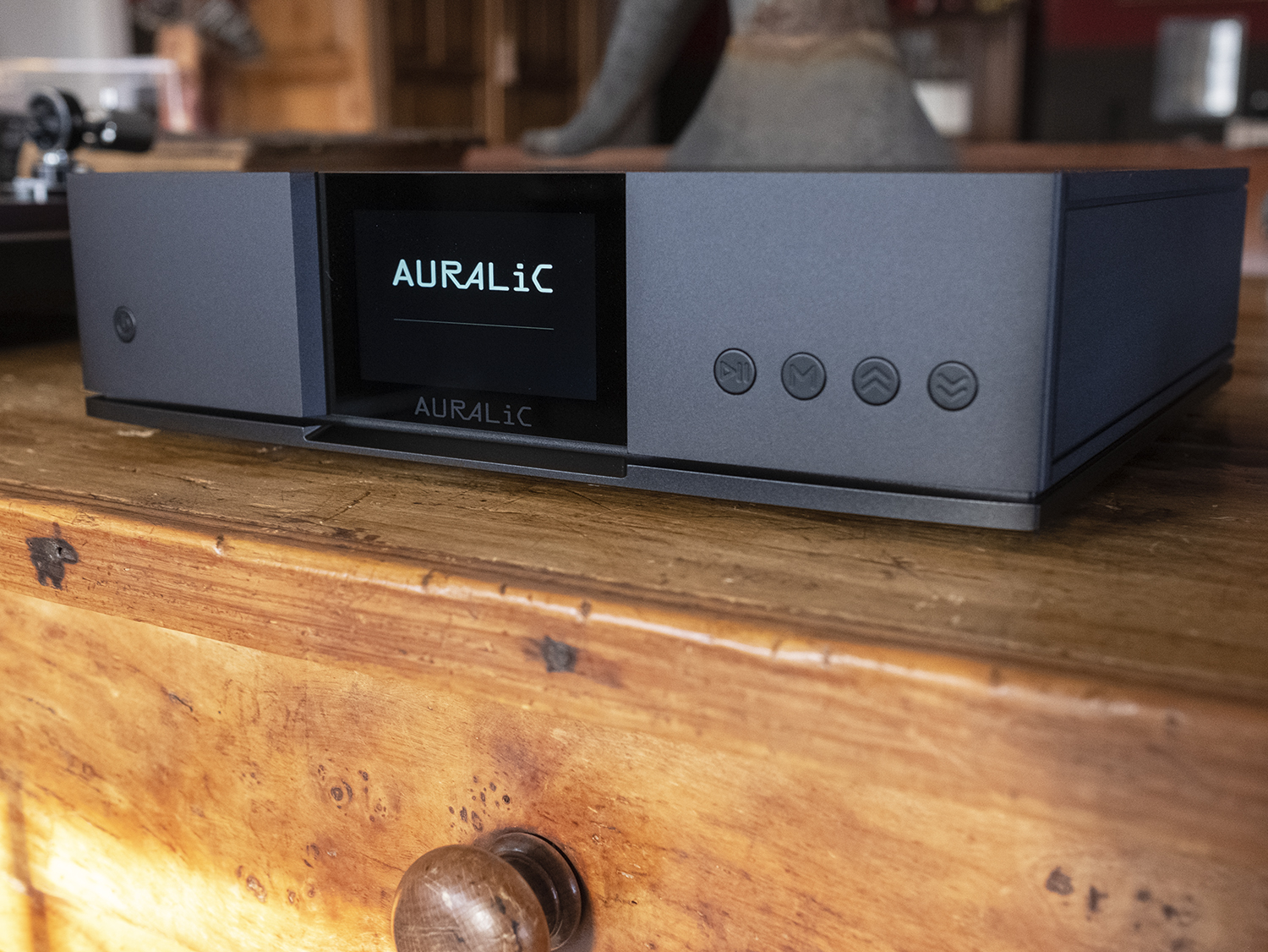
For the majority of the ARIES G2.2’s 2-month+ Barn stay, it was coupled to the Barn resident totaldac d1-unity (review) or Mola Mola Tambaqui (review) but it also got to play with the review Merason DAC1 Mk II (more info). And I can say it performed without a hitch regardless of the attached DAC, as you might expect. The ARIES G2.2 also made the music coming out of each system it played a part in with each DAC pairing sound sumptuous. These systems included the recently reviewed Viva Solista integrated amp driving the Barn resident DeVore Fidelity O/96 (review), the same Viva integrated with the review Vivid Audio GIYA G3 Series 2 (more info), and finally with the review Audionet HUMBOLDT integrated (more info) driving (the heck out of) the Vivids.
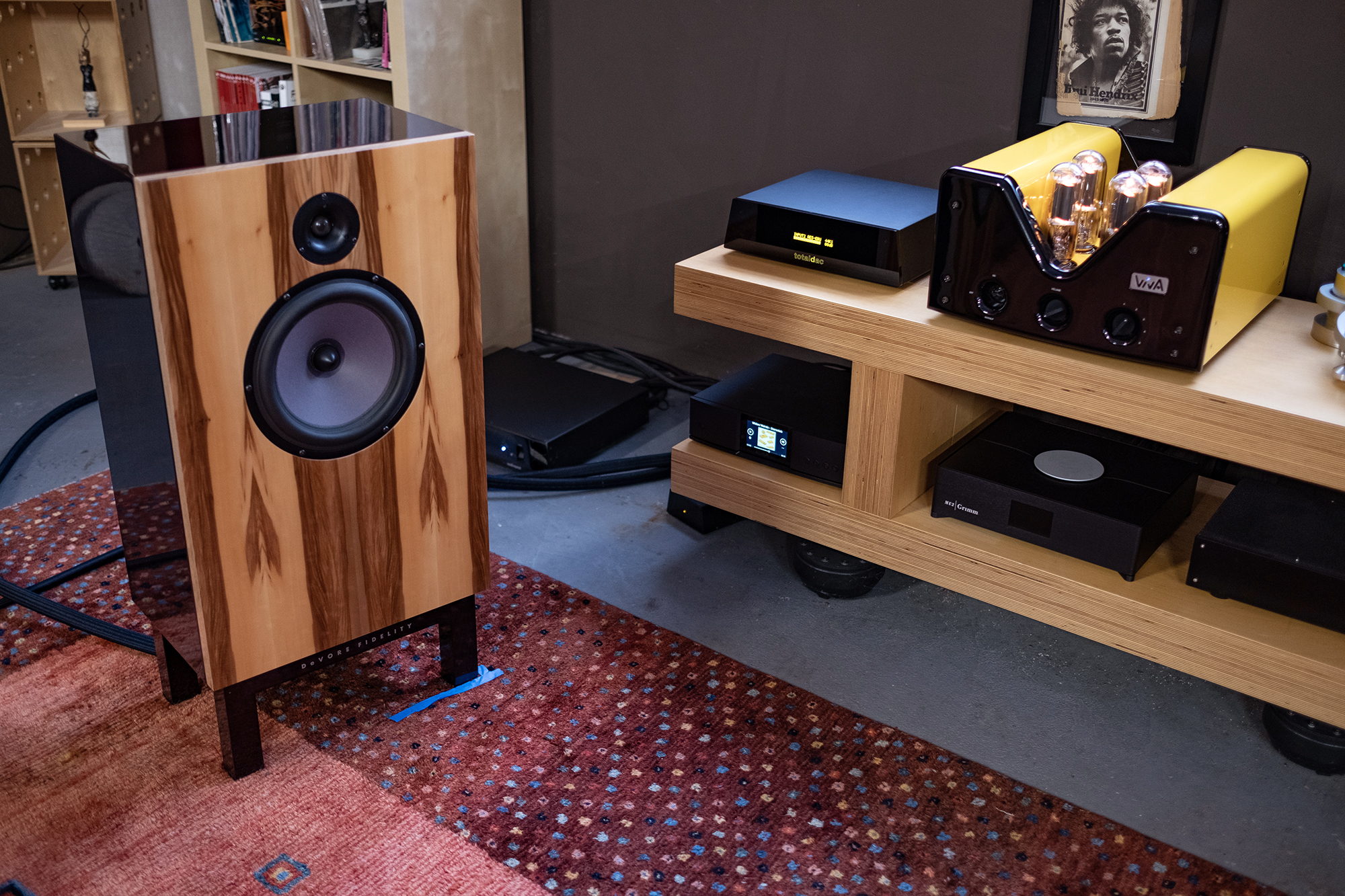
I always use Roon, when available, because I prefer it as an interface to my music sourced from Tidal, Qobuz, and local files stored on my Roon Rock (Roon Optimized Core Kit) (Intel NUC 11 Pro NUC11TNHi3 w/2TB SSD storage running Roon Core). I’m aware of people who claim that they hear sonic deficiencies with Roon compared to other software but I wonder how many of the myriad variables involved in network audio did they rule in or out. My best guess is not enough.
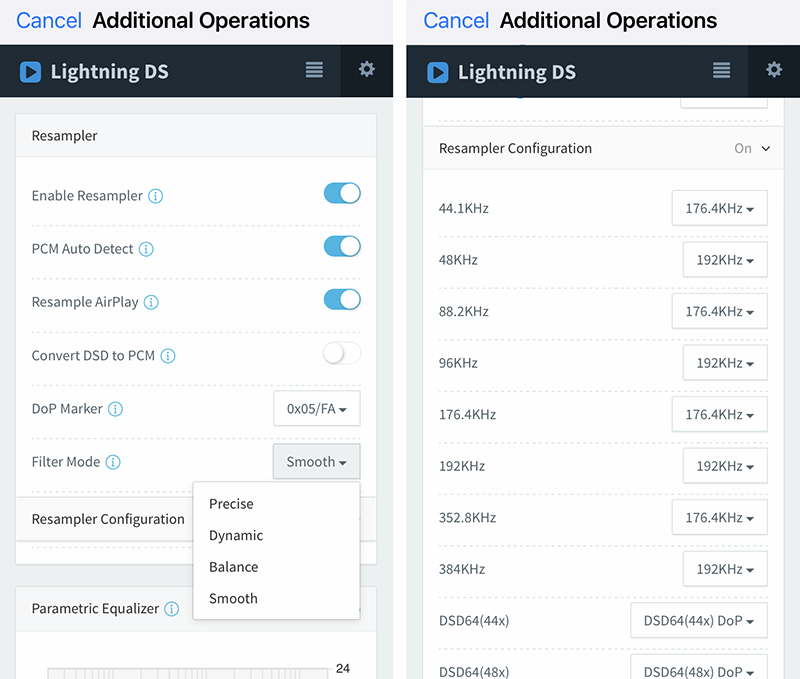
That said, Auralic’s own Lightning DS app is highly advanced (and free) and certainly gets the job done in style, offering Tidal and Spotify Connect, Qobuz, Amazon Music and more as well as access to your network attached music library. The Lightning app also gives you access to a host of DSP-based options including, but not limited to, Loudness Leveling, Output Delay, Enable/Disable and customize the inbuilt Resampler, Parametric EQ, Filter Mode, and Speaker Placement that offers the ability to tweak Left and Right speaker placement compensation.
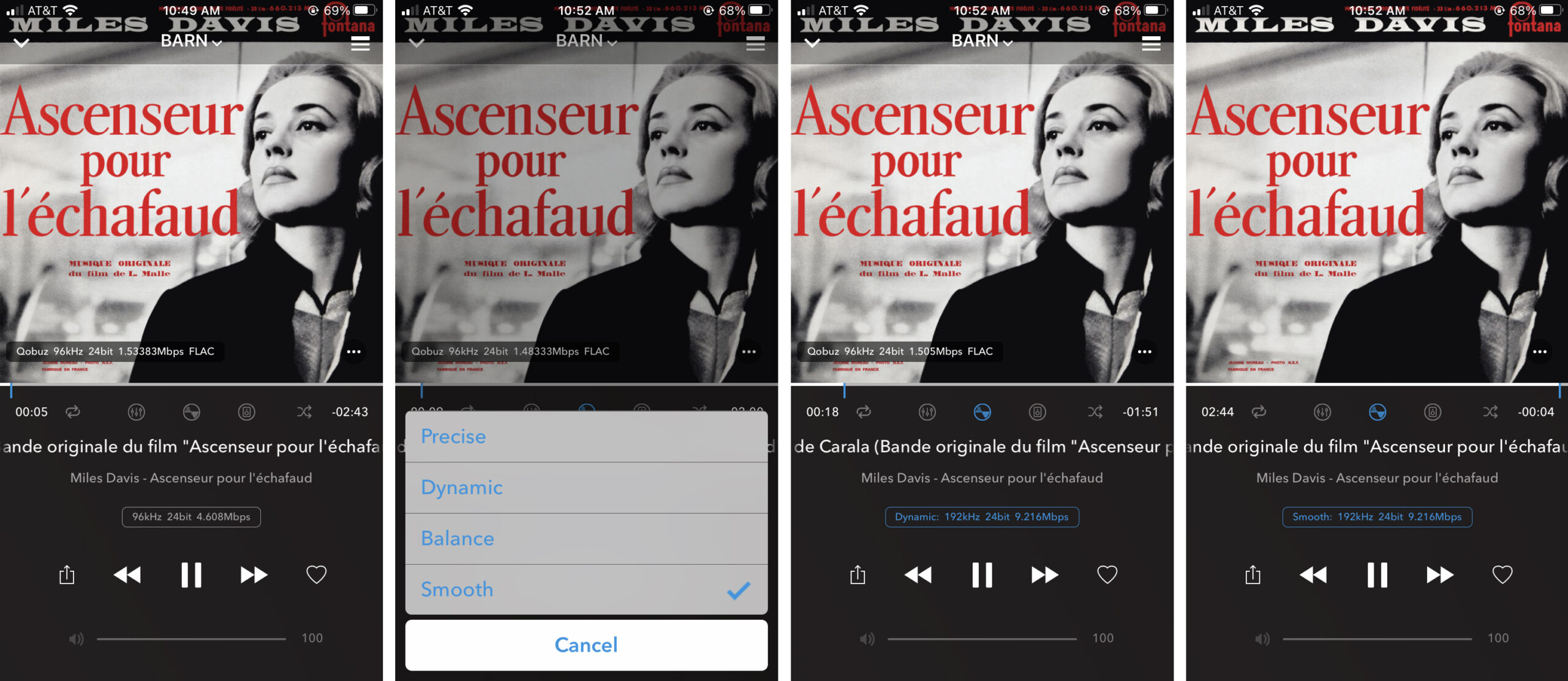
If you choose to enable the Resampler, those Filter Mode options show up on the main playing screen, providing quick and easy access to choose from Precise, Dynamic, Balance, and Smooth with the tap of a finger. I settled on Smooth because I like my music smooth but this option will be a big plus for people who like to switch filters based on the record in play.
When it comes to listening to music on the hifi, one of my least favorite things is A/B’ing to listen for difference but it’s an important part of my job so I attack A/B’ing with stern purposeful intent. No messing around, just the facts. To make the process more enjoyable, I try to pick music I don’t mind hearing over and over like Bruce Springsteen’s solo recorded to 4-track intended to be a demo Nebraska from 1982. But I have to be in the mood for Nebraska and weeks of sun-less winter gray got me there and A/B’ing between the ARIES G2.2 and G1.1 using the title track for starters revealed the sonic differences between the two—the G2.2 had this music sounding more refined, and it’s a rough recording, with more resolution, tone, and texture that made each element including harmonica, acoustic guitar, mandolin, and vocals sound more fully realized, more harmonically right (pardon the pun). The space in and around these simple goings on also felt better defined and more refined, or to put it in the negative, less vague and less loose as was the case when played through the G1.1.
I’ll also share that these kinds of realizations of better always make me wonder, and I’d imagine they make you wonder too, why didn’t I notice these supposed sonic shortcomings with the G1.1? You’ve been living with the damn thing for over a year! And the answer is direct A/B comparisons, as much as I hate ‘em, can reveal aspects of performance that would otherwise go unnoticed which is to say when enjoying music played through the ARIES G1.1 for the past year or so I never once thought about what it wasn’t doing. And I will also share that at its asking price currently at $2,249 it is one helluva HiFi bargain.
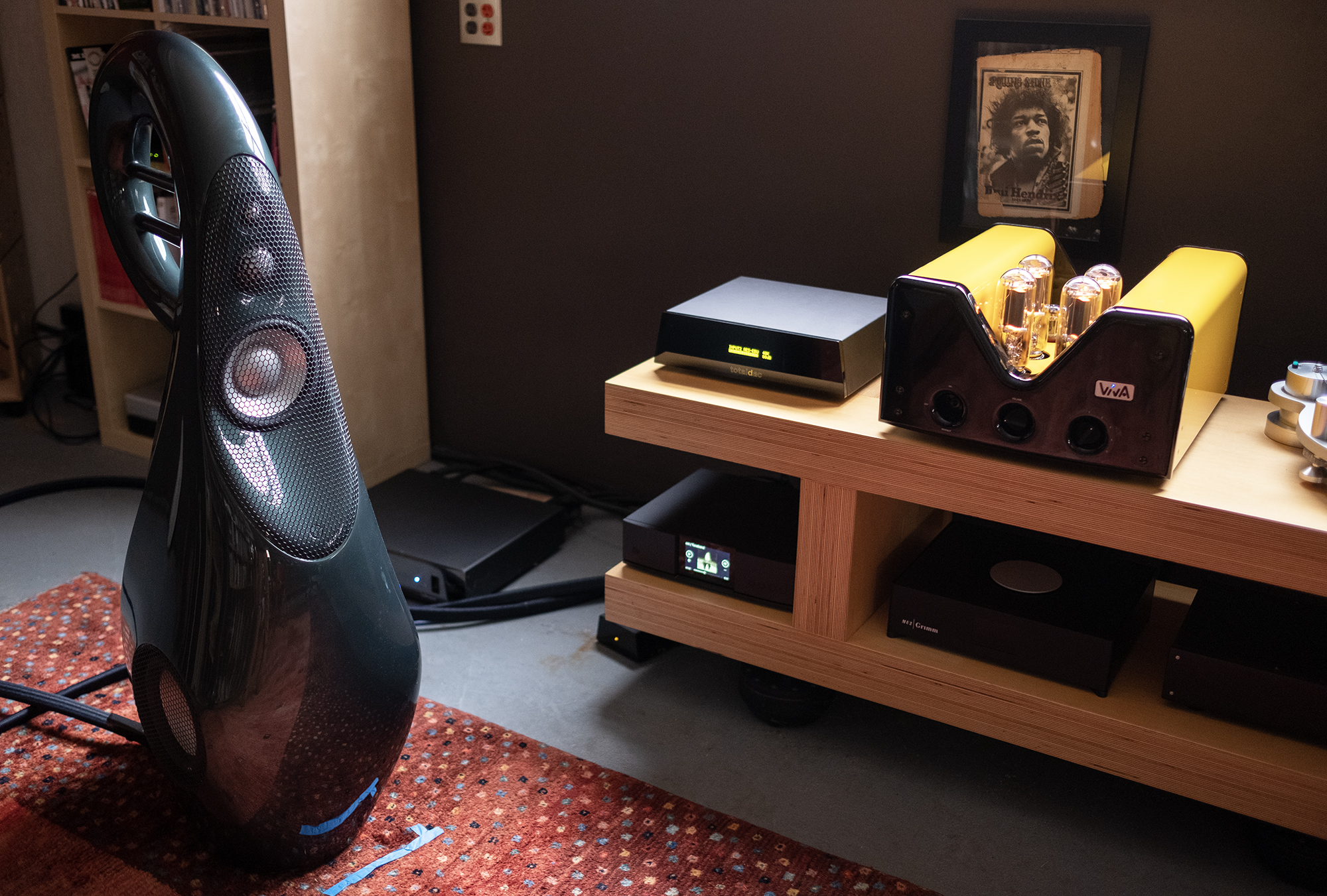
Back to Nebraska, I obviously wasn’t hanging with Bruce at home when he hit ‘record’ on that 4-track cassette recorder so my ‘reference’ is a moveable feast based on the system at hand and the kind of fine-grained details I’m digging into here—improved resolution, tone, texture, etc—are only fully revealed through comparative listening. And even if I had been there, listening to a recording is not the same thing as hanging with Bruce at home (I’m certain smells would be involved for one easy difference). I’m continually amazed when people think comparing disparate kinds of experiences makes any sense as if looking at a photo on a cell phone can equal standing in front of one of Michelangelo’s unfinished sculptures. The fact of the matter is, you haven’t seen a Michelangelo unless you’ve stood in its presence, which I found inspired a flood of reactions including fear, sorrow, and awe, and you haven’t heard Nebraska the way I heard it, both ways, unless you were here (and you weren’t).
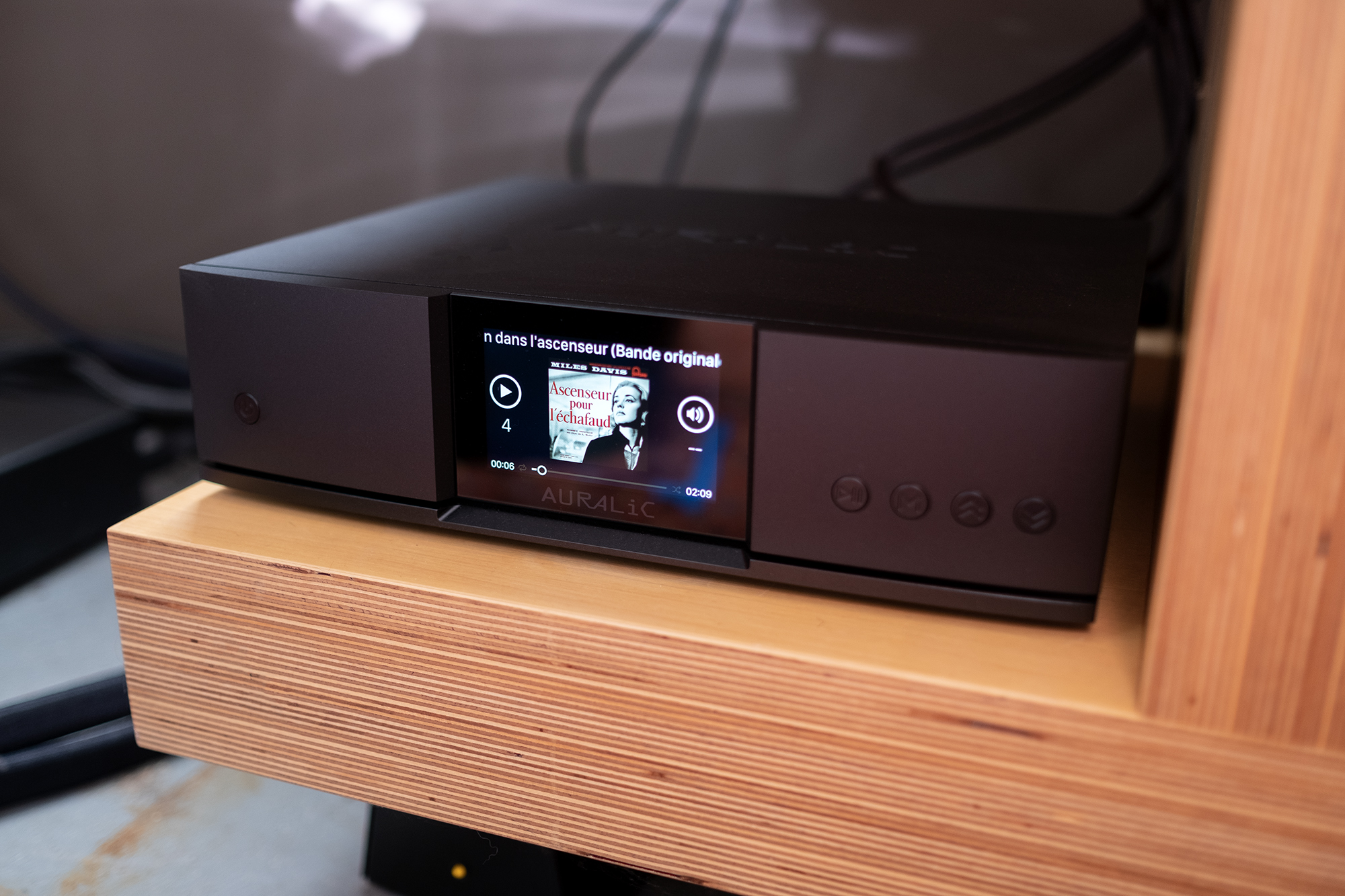
Which is why most reviewers listen to the thing under review in more than one system context with different gear to see which sonic traits travel with the thing under review regardless of the associated gear. Circling back to the ARIES G2.2, these differences noted on Nebraska were evident with all three DACs in each system setting. That said, the totaldac d1-unity, Mola Mola Tambaqui, and Merason DAC1 Mk II are all more than capable of revealing the improvements brought by the G2.2 over the G1.1 as was each system setting. The ARIES G2.2’s price of just over $6k ‘fits’ a system building context with the totaldac or Mola Mola as both cost more than double that number. I’m not suggesting that price alone tells us anything about performance, but when putting together a hifi, budgeting is important and I would not recommend spending more on a streamer than on the accompanying DAC. Even if giant killers loom large in the imagination and on paper, they more often than not turn out to be less impressive in person, the opposite of Michelangelo’s unfinished sculptures.
Habitat Ensemble’s self-titled debut from November of last year is a lovely ambient psych-folk gem of a record.
From the liner notes:
The collective originates deep in the south of the Czech Republic, on the border with Austria, amongst the idyllic hills and fields of a village called Maříž, where a summer school of outsiders and creatives have been gathering since the 1990s. Enriching each other through intercultural exchange, summer school participants have created a unique gathering of artistic expression and interdisciplinary research.
…
Whether it be musical experimentation, composition, poetry, song or dance, Habitat Ensemble, having started as a series of multidisciplinary workshops, slowly developed into a unique musical recording. The album serves to conjure the unique nature, community, experimentation surrounding the school and the collective’s search for harmony across all of these, both musical and spiritual.
If that all sounds a bit too Bohemian for you, I suggest being that sober is bad for your health. Habitat Ensemble is filled with acoustic and electronic elements plus field recordings that leapt from the Vivid GIYA with sparkling life and energy. While I’ll dig into the Vivids in their review, they release sound energy into the room, or into a Barn, with stunning effortless grace that makes them disappear as the source of sounds. Spooky. Double bass, guitar, piano, synths, keyboards, voices, percussion and drums were all expertly sounded out with the ARIES G2.2 adding its own touches of grace and resolution to the mix. Compared to the G1.1, the Habitat Ensemble sounded and felt more fully present, more fully realized in Barn with the G2.2 handling the Ethernet to digital audio conversion feeding the totaldac d1-unity. In a word, deeper.
I revisited Pelt’s 1997 album Técheöd, which I highlighted in my review of the Grimm Audio MU1 server/streamer. Even though the MU1 left here at the end of October of last year, I still remember it’s standout performance and how it brought new life and a level of refinement to music played through the totaldac d1-unity and Mola Mola Tambaqui that I’ve yet to hear bettered. In my mind, it remains the streamer to beat even though I cannot offer a direct comparison with the ARIES G2.2 or even a comparison in the same system setting. So I’m kinda extrapolating not reporting. With all that said, while the $12,500 Grimm MU1 would be my cost no object choice, the ARIES G2.2 left nothing to be desired in the here and now and it sounded and felt fully refined and more than capable of getting its job done with quiet ease.
Técheöd‘s other-worldly mix of sonic delights danced out of the Vivid GIYA and into the Barn with astounding grace, ease, color, and live-like light with the G2.2 in play.
Miles Davis’ soundtrack for Louis Malle’s Ascenseur pour L’échafaud is a favorite slice of steamy jazz and I let it play through in its entirety while I finished off writing this very review, moving from desk to couch and back again (and again) and this system with the ARIES G2.2 feeding the totaldac d1-unity which sent out Ascenseur pour L’échafaud in analog form to the mighty Audionet HUMBOLDT driving the Vivid GIYA put me smack dab into Le Post Parisian studios c.1957 along with Miles and Jeanne Moreau (a guy can dream). Jazz critic Phil Johnson described Ascenseur as having “The loneliest trumpet sound you will ever hear…Hear it and weep.” While I didn’t weep, I did wonder at the sad, lonely beauty of Miles & Co. filling the Barn with jazz so cool I had to turn up the heat.
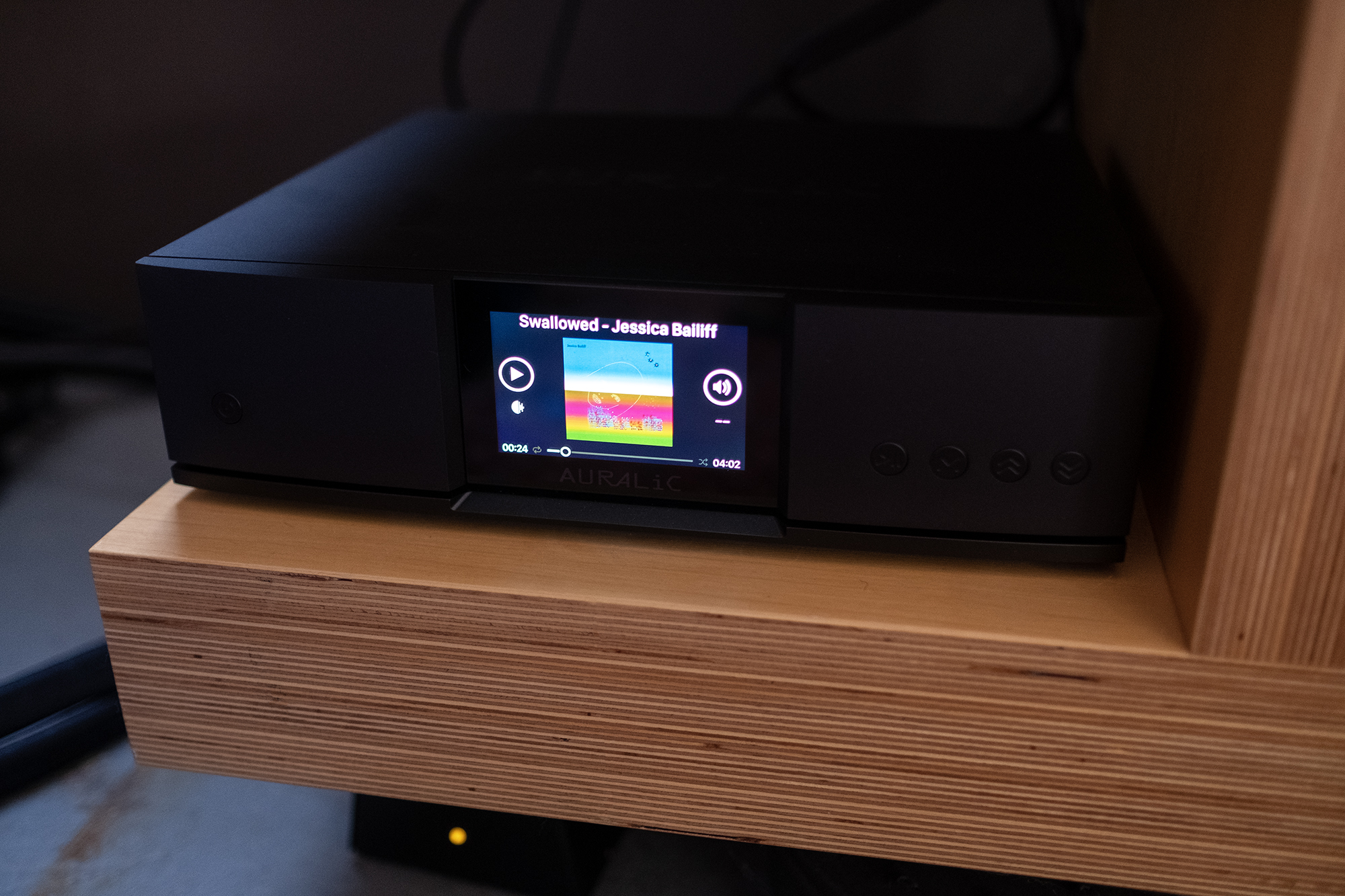
The easy part of this review lies in pointing out the ARIES G2.2 clearly offers improved performance over the ARIES G1.1. The sound of the systems the ARIES G2.2 got to play in became more resolving, more revealing of music’s nuance, color, tone and texture with the G2.2 in both A/B comparisons and more importantly (to my mind) over time. Music was simply that much more engrossing. The less easy, less obvious part has to do with less fun things like budgets and systems and preferences but I’d like to make this easy too—the Auralic ARIES G2.2 is very clearly worth your time and money if you’re looking for a streamer that offers superb sound quality while throwing in a great free app and a host of DSP options that allow for a custom sonic fit.
Auralic ARIES G2.2 Wireless Streaming Transporter
Price: $6099
Company Website: Auralic
Specifications
Streaming File Formats
Lossless: AIFF, ALAC, APE, DIFF, DSF, FLAC, OGG, WAV and WV
Lossy: AAC, MP3, MQA* and WMA
Sampling Rates
PCM: 44.1KHz to 384KHz in 32Bit**
DSD: DSD64(2.8224MHz), DSD128(5.6448MHz), DSD256(11.2896MHz), DSD512(22.57892MHz)***
Control Software
AURALiC Lightning DS for iOS
AURALiC Lightning DS for web browser (device settings only)
OpenHome compatible control software (BubbleUPnP, Kazoo)
Roon (Roon Core required separately)
Streaming Inputs
Network shared folder, USB Storage, USB CD Drive, Internal Music Storage****, UPnP/DLNA Media Server, Amazon Music Unlimited, HighResAudio, KKBOX, Qobuz Sublime+, Netease Music, TIDAL/TIDAL Connect, AirPlay, Spotify Connect, TuneIn, Internet Radio, RoonReady
Audio Outputs
AURALiC Lightning Link
Digital Outputs: AES/EBU, Coaxial, Toslink
USB Output: USB Host to compatible DAC *****
Network
Wired: Gigabit Ethernet
Wireless: 802.11b/g/n/ac Tri-Band WiFi
Power Consumption
Standby: <0.5W
Sleep: <10W
Playback: 50W at max.
Dimensions – W x D x H
13.4 x 12.6 x 3.7 in. (34cm x 32cm x 9.6cm)
Weight
22.5 lbs (10.2kg)
Product Finishing
Anodized aluminum case in matte black with nickel coated copper EMI shielding enclosure.
Contents
AURALiC ARIES G2.2 Wireless Streaming Transporter
2*External WiFi antenna (2pcs)
Power cord
User’s guide
* AURALiC streaming devices can act as a passthrough for unaltered MQA files to a customer’s own MQA-certified DAC for downstream processing.
** 352.8KS/s and 384KS/s and 32bit are supported through Lightning Link and USB Output only
*** By ‘DoP V1.1’ or native DSD protocol
**** Model with internal NVME storage option
***** ‘Compatible DAC’ means a DAC not requiring a driver for Linux system


